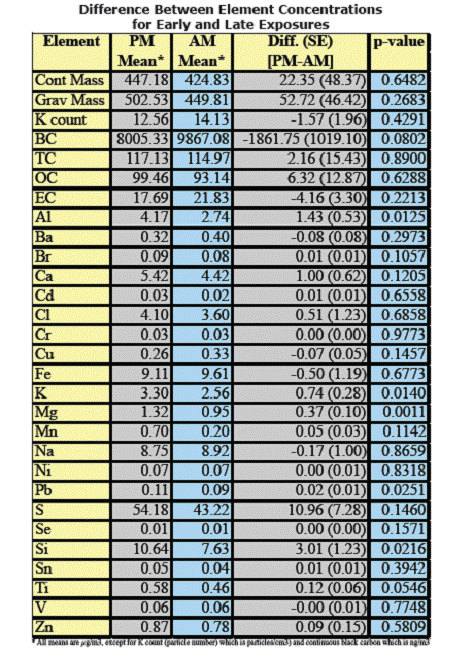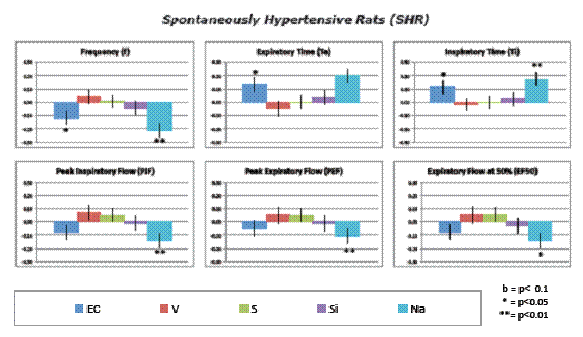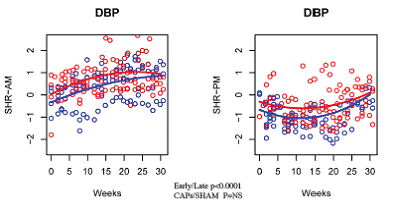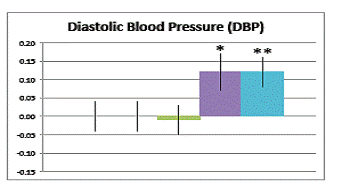Grantee Research Project Results
2009 Progress Report: Assessing Toxicity of Local and Transported Particles Using Animal Models Exposed to CAPs
EPA Grant Number: R832416C003Subproject: this is subproject number 003 , established and managed by the Center Director under grant R832416
(EPA does not fund or establish subprojects; EPA awards and manages the overall grant for this center).
Center: Health Effects Institute (2015 - 2020)
Center Director: Greenbaum, Daniel S.
Title: Assessing Toxicity of Local and Transported Particles Using Animal Models Exposed to CAPs
Investigators: Godleski, John J. , Koutrakis, Petros
Institution: Harvard University
EPA Project Officer: Chung, Serena
Project Period: October 1, 2005 through September 30, 2010 (Extended to September 30, 2011)
Project Period Covered by this Report: August 1, 2008 through July 31,2009
RFA: Particulate Matter Research Centers (2004) RFA Text | Recipients Lists
Research Category: Human Health , Air
Objective:
Progress Summary:



|


Journal Articles on this Report : 6 Displayed | Download in RIS Format
| Other subproject views: | All 14 publications | 12 publications in selected types | All 12 journal articles |
|---|---|---|---|
| Other center views: | All 206 publications | 199 publications in selected types | All 199 journal articles |
| Type | Citation | ||
|---|---|---|---|
|
|
Bartoli CR, Wellenius GA, Coull BA, Akiyama I, Diaz EA, Lawrence J, Okabe K, Verrier RL, Godleski JJ. Concentrated ambient particles alter myocardial blood flow during acute ischemia in conscious canines. Environmental Health Perspectives 2009;117(3):333-337. |
R832416 (2009) R832416C003 (2009) R832416C003 (Final) |
|
|
|
Bartoli CR, Wellenius GA, Diaz EA, Lawrence J, Coull BA, Akiyama I, Lee LM, Okabe K, Verrier RL, Godleski JJ. Mechanisms of inhaled fine particulate air pollution-induced arterial blood pressure changes. Environmental Health Perspectives 2009;117(3):361-366. |
R832416 (2008) R832416 (2009) R832416C003 (2009) R832416C003 (Final) R827353 (Final) |
|
|
|
Bartoli CRG, Godleski JJ. Blood flow in foreign-body capsules surrounding surgically implanted subcutaneous devices. Journal of Surgical Research 2010;158(1):147-154. |
R832416 (2009) R832416C003 (2009) |
Exit |
|
|
Fanning EW, Froines JR, Utell MJ, Lippmann M, Oberdorster G, Frampton M, Godleski J, Larson TV. Particulate Matter (PM) Research Centers (1999-2005) and the role of interdisciplinary center-based research. Environmental Health Perspectives 2009;117(2):167-174. |
R832416 (2009) R832416C003 (2009) R827351 (Final) R827352 (Final) R827353 (Final) R827354 (Final) R827355 (Final) R832415 (2010) R832415 (2011) R832415 (Final) R832415C003 (2011) R832415C004 (2011) R832415C005 (2011) |
|
|
|
Ghelfi E, Rhoden CR, Wellenius GA, Lawrence J, Gonzalez-Flecha B. Cardiac oxidative stress and electrophysiological changes in rats exposed to concentrated ambient particles are mediated by TRP-dependent pulmonary reflexes. Toxicological Sciences 2008;102(2):328-336. |
R832416 (2008) R832416 (2009) R832416C003 (2009) R827353 (Final) |
Exit Exit Exit |
|
|
Nikolov MC, Coull BA, Catalano PJ, Godleski JJ. Multiplicative factor analysis with a latent mixed model structure for air pollution exposure assessment. Environmetrics 2011;22(2):165-178. |
R832416 (2009) R832416 (Final) R832416C003 (2009) R832416C003 (Final) |
Exit |
Supplemental Keywords:
concentrated air particles, acute cardiovascular effects, coarse particles, fine particles, vascular dysfunction, RFA, Health, Scientific Discipline, Air, particulate matter, Environmental Chemistry, Health Risk Assessment, Risk Assessments, ambient air quality, atmospheric particulate matter, human health effects, chemical characteristics, automobile exhaust, airborne particulate matter, cardiovascular vulnerability, chemical composition, biological mechanism , biological mechanisms, ambient particle health effects, mobile sources, human exposure, autonomic dysfunction, oxidative stressRelevant Websites:
http://www.hsph.harvard.edu/epacenterProgress and Final Reports:
Original AbstractMain Center Abstract and Reports:
R832416 Health Effects Institute (2015 - 2020) Subprojects under this Center: (EPA does not fund or establish subprojects; EPA awards and manages the overall grant for this center).
R832416C001 Cardiovascular Responses in the Normative Aging Study: Exploring the Pathways of Particle Toxicity
R832416C002 Cardiovascular Toxicity of Concentrated Ambient Fine, Ultrafine and Coarse Particles in Controlled Human Exposures
R832416C003 Assessing Toxicity of Local and Transported Particles Using Animal Models Exposed to CAPs
R832416C004 Cardiovascular Effects of Mobile Source Exposures: Effects of Particles and Gaseous Co-pollutants
R832416C005 Toxicological Evaluation of Realistic Emission Source Aerosol (TERESA): Investigation of Vehicular Emissions
The perspectives, information and conclusions conveyed in research project abstracts, progress reports, final reports, journal abstracts and journal publications convey the viewpoints of the principal investigator and may not represent the views and policies of ORD and EPA. Conclusions drawn by the principal investigators have not been reviewed by the Agency.
Project Research Results
12 journal articles for this subproject
Main Center: R832416
206 publications for this center
199 journal articles for this center
